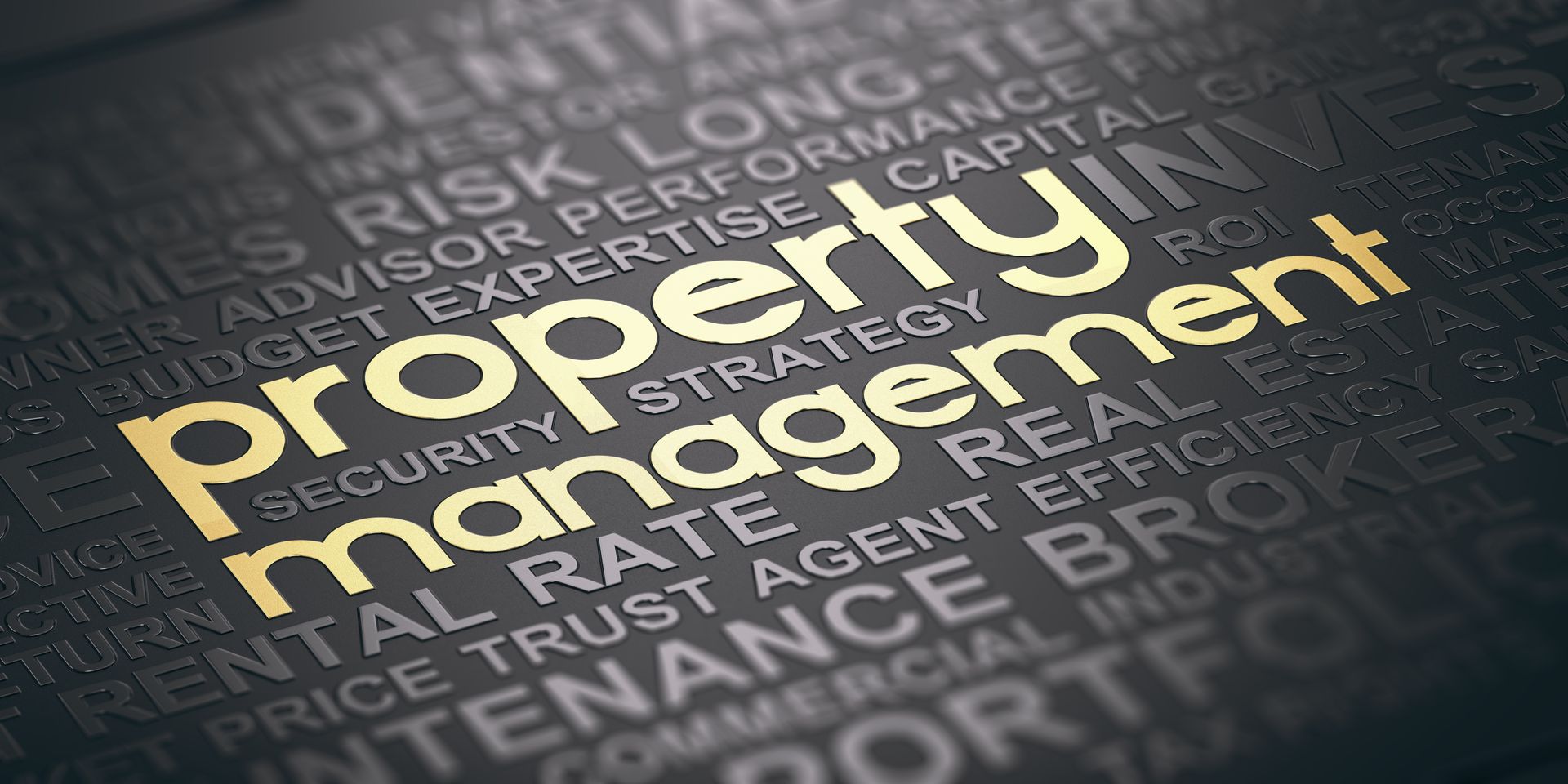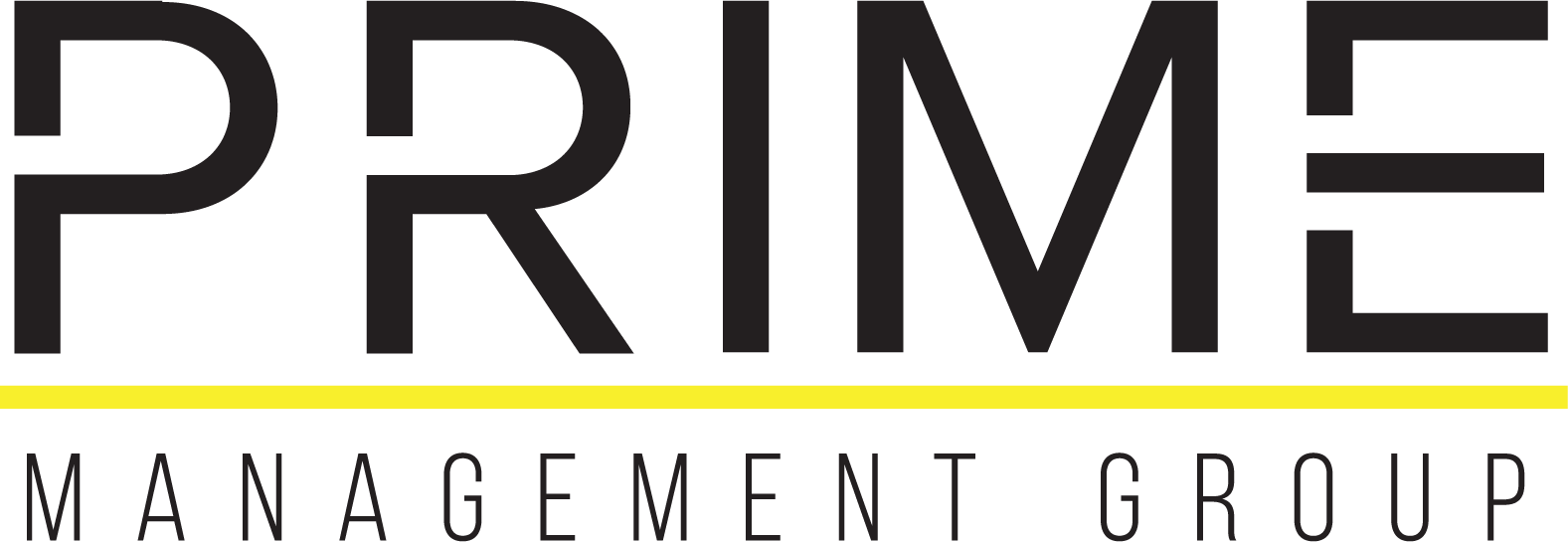WELCOME TO THE Prime Management Group BLOG
Discover Insights,

Real estate investing can be a profitable venture, but it requires understanding specific industry terminology. Whether you’re just starting out or are a seasoned investor, knowing the key terms can help you make informed decisions, communicate effectively with professionals, and navigate the complexities of property investment. This blog breaks down the essential real estate investing terms every investor should know. 1. Cash Flow: Cash flow refers to the amount of money left over after all expenses (mortgage, taxes, maintenance, etc.) have been paid. In real estate, positive cash flow occurs when the income from a rental property exceeds these expenses. Why It’s Important: Positive cash flow is the ultimate goal for investors seeking to generate steady income. Properties with good cash flow can provide a reliable source of passive income. 2. Cap Rate (Capitalization Rate): The cap rate is the ratio of a property’s net operating income (NOI) to its purchase price. It is expressed as a percentage and is used to estimate the potential return on investment. Formula: Cap Rate = (Net Operating Income / Property Value) × 100 Why It’s Important: Investors use the cap rate to compare the profitability of different properties. A higher cap rate typically indicates a more lucrative investment, though it may also come with more risk. 3. Appreciation: Appreciation refers to the increase in a property’s value over time due to market conditions or improvements made to the property. Why It’s Important: Investors often rely on appreciation to grow their wealth. Buying in areas with high appreciation potential can lead to significant returns when selling the property in the future. 4. Equity: Equity is the difference between the current market value of a property and the amount you still owe on the mortgage. Why It’s Important: As you pay down your mortgage and the property appreciates in value, your equity increases. Equity can be leveraged to acquire additional properties or used for cash-out refinancing. 5. Loan-to-Value Ratio (LTV): The loan-to-value ratio is the percentage of a property’s value that is financed through a mortgage. It is calculated by dividing the loan amount by the property’s appraised value. Formula: LTV = (Loan Amount / Appraised Property Value) × 100 Why It’s Important: Lenders use LTV to assess the risk of a loan. A lower LTV typically means the borrower has more equity in the property, which reduces the lender’s risk. 6. Net Operating Income (NOI): NOI is the income generated from a property after all operating expenses (such as property management, insurance, taxes, and maintenance) have been subtracted, but before debt service (mortgage payments). Why It’s Important: NOI is a key metric used to evaluate the profitability of a rental property. Higher NOI typically indicates a more profitable investment. 7. Gross Rent Multiplier (GRM): GRM is a metric used to assess the value of a rental property by comparing its purchase price to its gross annual rental income. Formula: GRM = Property Price / Gross Annual Rent Why It’s Important: The GRM helps investors quickly evaluate whether a property is overpriced or undervalued. However, unlike the cap rate, it doesn’t consider operating expenses. 8. Debt Service Coverage Ratio (DSCR): DSCR is a measure of a property’s ability to cover its debt obligations, calculated by dividing the property’s NOI by its total debt service (loan payments). Formula: DSCR = Net Operating Income / Total Debt Service Why It’s Important: Lenders use the DSCR to determine whether a property generates enough income to pay off the mortgage. A DSCR above 1 means the property can cover its debt payments, while a ratio below 1 suggests the property isn’t generating enough income to do so. 9. Vacancy Rate: The vacancy rate refers to the percentage of a property’s available rental units that are unoccupied at a given time. Why It’s Important: A high vacancy rate can signal a problem with the property’s desirability or location. Investors should aim to keep vacancy rates low to maximize rental income. 10. Real Estate Investment Trust (REIT): A REIT is a company that owns, operates, or finances income-generating real estate. REITs allow individual investors to invest in large-scale real estate projects without having to buy properties themselves. Why It’s Important: REITs provide a way for investors to diversify their real estate portfolios without directly managing properties. They are also a liquid investment, meaning they can be bought and sold like stocks. 11. Hard Money Loan: A hard money loan is a short-term loan typically used by real estate investors to finance the purchase of a property, often for a fix-and-flip. These loans are secured by the property itself and have higher interest rates. Why It’s Important: Hard money loans offer quick access to capital but come with higher risks. They are often used by investors who need immediate funding or have difficulty securing traditional financing. 12. 1031 Exchange: A 1031 exchange allows investors to defer paying capital gains taxes on the sale of an investment property by reinvesting the proceeds into a similar property. Why It’s Important: This strategy can help investors grow their portfolios without facing immediate tax consequences. However, the process involves strict timelines and criteria that must be followed to qualify. 13. Capital Expenditures (CapEx): CapEx refers to the funds used by an investor to improve or maintain a property. Examples include replacing a roof, installing new windows, or upgrading the HVAC system. Why It’s Important: Understanding CapEx is important because these are expenses that can impact the long-term value and profitability of a property. Budgeting for CapEx ensures you’re prepared for major property-related costs. 14. House Hacking: House hacking is a strategy where the investor lives in one part of a property (such as a multi-family unit) and rents out the other units to cover mortgage payments and generate cash flow. Why It’s Important: House hacking is a popular entry-level strategy for new investors because it allows them to generate rental income while reducing their own living expenses. Conclusion Real estate investing can be complex, but having a solid understanding of key terms can make the process smoother and more profitable. Whether you’re calculating potential returns, evaluating a property’s risk, or planning your investment strategy, these terms provide a foundation for making informed decisions. At Prime Management Group, we’re here to guide you through the nuances of real estate investing and property management. Contact us today to learn more!

Buying real estate is one of the biggest financial decisions you can make, and timing plays a crucial role in ensuring a successful investment. Whether you're a first-time buyer or an experienced investor, knowing when to buy can significantly impact your returns. This blog explores the key factors to consider when determining the right time to purchase property. 1. Understand the Market Cycle Real estate markets move in cycles, typically consisting of four phases: Recovery: After a downturn, the market begins to stabilize, and prices start to recover. This can be a good time to buy before prices start to rise significantly. Expansion: During this phase, demand increases, property values appreciate, and new developments emerge. While prices may be higher, the market still offers growth potential. Hyper Supply: At this point, supply begins to outpace demand, causing prices to stabilize or drop. This might not be the best time to buy unless you can find deals below market value. Recession: In this phase, prices fall due to excess supply and reduced demand. Investors with a long-term view may find opportunities to purchase properties at a discount. Knowing where the market stands can help you make informed decisions about when to enter. 2. Pay Attention to Interest Rates Interest rates are another critical factor in determining the right time to buy real estate. Low interest rates reduce your monthly mortgage payments, making properties more affordable. Conversely, when interest rates rise, it may be a signal to lock in current rates before they go higher. Before buying, consult with a mortgage broker to understand current rates and the direction they may be heading. Timing your purchase when rates are favorable can save you a significant amount of money over the life of your mortgage. 3. Personal Financial Readiness Timing the market is important, but your personal financial situation should take precedence: Stable Income: Ensure that you have a stable source of income to comfortably cover mortgage payments, property taxes, and maintenance costs. Credit Score: A high credit score can help you secure better mortgage terms. If your credit score isn’t where it needs to be, you might consider waiting until you can improve it. Down Payment: Having at least 20% of the property’s purchase price saved for a down payment is often recommended, as it can help you avoid private mortgage insurance (PMI) and reduce your overall loan cost. Emergency Fund: Ensure you have savings set aside for emergencies, both personal and property-related. Being financially prepared can put you in a stronger position to buy when market conditions are right. 4. Seasonal Trends in Real Estate The time of year can also influence the real estate market. Historically: Spring and Summer: These are the busiest times in the housing market. There is more inventory to choose from, but competition can drive up prices. Fall and Winter: During these months, the market slows down, which can mean fewer homes for sale but also less competition. Sellers may be more motivated to negotiate, making it a good time to snag a deal. Depending on your priorities—whether it’s finding the perfect home or getting the best price—seasonal trends may affect your timing. 5. Long-Term Investment Goals If you're buying real estate for investment purposes, it's important to consider the long-term market outlook: Is the area projected to grow? Look for developments like new businesses, schools, or public transport that could increase property values over time. Rental Demand: In areas with high rental demand, purchasing property can provide immediate rental income, making it a good time to buy even if the market is slow. Tax Benefits: Purchasing property towards the end of the year can sometimes provide tax advantages, such as deductions for mortgage interest and property taxes. If you’re looking at real estate as a long-term investment, the "right time" is often when you're financially ready and the market conditions align with your goals. 6. Economic and Political Climate Broader economic conditions can also signal whether it’s a good time to buy. Factors such as inflation, unemployment rates, and government policies on homeownership can all impact the real estate market. For example: Low Inflation: When inflation is low, real estate tends to appreciate steadily, making it a safe investment. Government Incentives: Keep an eye on any government programs that offer incentives for homebuyers, such as first-time buyer grants or tax breaks. Being aware of the economic and political environment can help you determine when to move forward with a purchase. Conclusion There is no perfect time for everyone to buy real estate—it ultimately depends on your personal financial situation, long-term goals, and market conditions. By staying informed about the market cycle, interest rates, and other key factors, you can make a well-timed decision that supports both your immediate needs and your future wealth-building goals. At Prime Management Group, we’re here to guide you through your real estate journey, offering insights on the best times to buy and ensuring you’re positioned for success. Contact us today to learn more about our property management and investment services.

A general guideline for determining whether you should refinance your mortgage is that you should do it only if you can lower your interest rate by at least 2%. While this is a good guideline to follow, it’s not a hard and fast rule when refinancing a house. There are several other factors to consider when deciding if refinancing your home loan is right for you. 1. Mortgage refinancing rates When refinancing your mortgage, you’re replacing your existing mortgage with a new mortgage. Your new mortgage refinancing rate is partially based on your credit history. So, if your credit score or financial situation has improved significantly since getting your current loan, it may be a good time to refinance. Of course, you need to find out what your new interest rate will be. The best way to do that is to speak with a mortgage loan officer. They’ll be able to give you a good idea of your potential mortgage finance rate. Also, you may be offered the option of paying a point upfront. For instance, if you’re able to pay 1% of the loan out of pocket, you may be able to lower your mortgage finance rate. After speaking with a loan officer to figure out your new interest rate, you’ll be able to calculate your monthly savings and determine whether the cost of mortgage refinancing is worth it. 2. Mortgage refinancing terms If you refinance your loan several years into the term, keep in mind that this may result in a longer loan term. For instance, if you exchange a 30-year mortgage for another 30-year mortgage after 15 years, you’ll end up paying for 45 years total. Your payments after the refinance will decrease significantly, but you’ll be making payments for many years longer than you originally thought. And you’ll often end up paying more in interest over time. On the other hand, if you exchange a 30-year mortgage for a 15-year mortgage after 10 years, you can potentially save thousands of dollars. Even with a lower interest rate, your monthly payments may go up, but you’ll shorten your loan period and end up paying less in interest over time. 3. Mortgage refinancing fees Mortgage refinancing fees can total several thousand dollars and might include: Mortgage application fee Origination fee Credit report Home inspection Document preparation fee Prepayment penalty Appraisal fee Title examination Flood certification Pest inspection Courier services Title and recording fees Various taxes Generally speaking, you should be prepared to pay between 3 to 6% of your refinanced principal in refinancing fees. Private mortgage insurance (PMI) Some homeowners refinance to get rid of private mortgage insurance or PMI, which is often required if your loan balance is more than 80% of your home’s value. Eliminating PMI doesn’t always require refinancing, but refinancing your home may be an opportunity to remove this additional expense while restructuring your loan for a lower rate or different term. Your home equity Another reason homeowners choose to refinance is to build equity faster. Or to leverage the equity they already have. When you refinance a 30-year loan to a 15-year loan, you’ll build equity twice as fast. This refinance strategy will also help you save money in interest because it will only take you half the time to pay off your loan payment. On the other hand, if you already have equity in your home, you can tap into it to help fund education, home improvements or other unexpected expenses. With this strategy, you may refinance your mortgage loan for more than you currently owe to get access to the cash you need. Mortgage refinancing savings It’s important to decide how long you’ll be in your current home to make sure your savings will outweigh the cost to refinance your mortgage. To find out how long it will take to recover refinancing costs, divide the total cost of refinancing by the amount you’ll save on your mortgage payment each month. That number is the length of time, in months, that it will take to break even. If you plan to stay in your home longer than it would take to break even, refinancing your loan may be a good idea.

There are so many good reasons to communicate with site visitors. Tell them about sales and new products or update them with tips and information. Here are some reasons to make blogging part of your regular routine. Blogging is an easy way to engage with site visitors. Writing a blog post is easy once you get the hang of it. Posts don’t need to be long or complicated. Just write about what you know, and do your best to write well. Show customers your personality When you write a blog post, you can really let your personality shine through. This can be a great tool for showing your distinct personality. Blogging is a terrific form of communication Blogs are a great communication tool. They tend to be longer than social media posts, which gives you plenty of space for sharing insights, handy tips and more. It’s a great way to support and boost SEO Search engines like sites that regularly post fresh content, and a blog is a great way of doing this. With relevant metadata for every post so search engines can find your content. Drive traffic to your site Every time you add a new post, people who have subscribed to it will have a reason to come back to your site. If the post is a good read, they’ll share it with others, bringing even more traffic! Blogging is free Maintaining a blog on your site is absolutely free. You can hire bloggers if you like or assign regularly blogging tasks to everyone in your company. A natural way to build your brand A blog is a wonderful way to build your brand’s distinct voice. Write about issues that are related to your industry and your customers.




